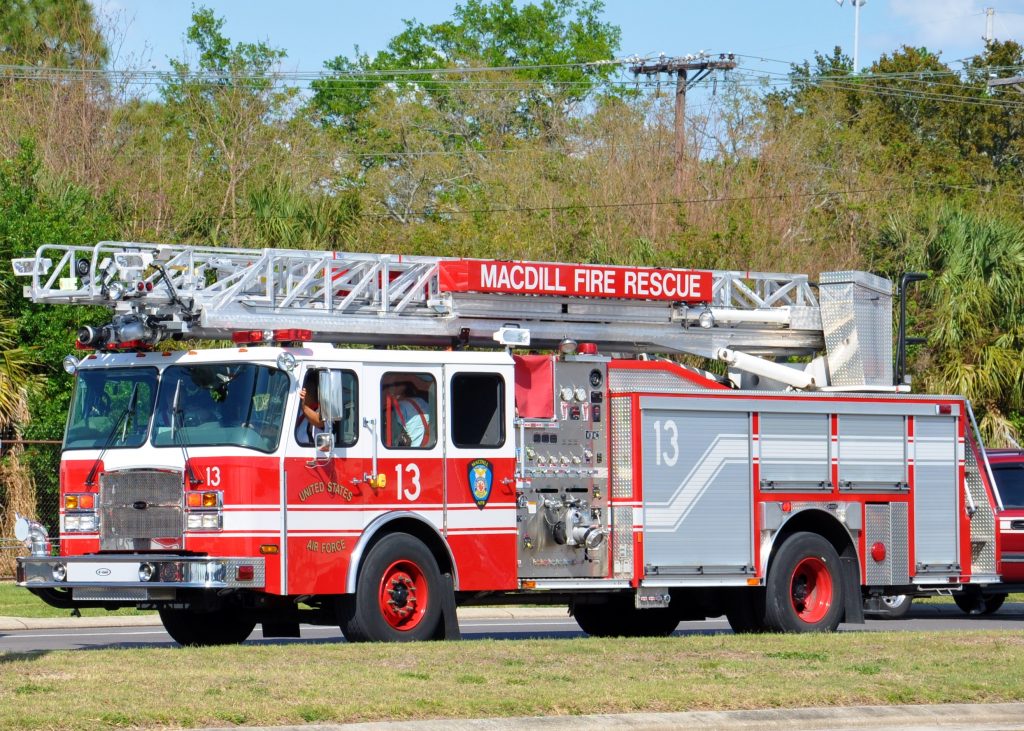
At the time of writing, the ongoing Palisades wildfire razed 35,000 acres of land, destroying over 12,000 buildings in the Los Angeles area. As the effects of climate change initiate and exacerbate more wildfires across North America, it has brought more attention to the demands of fire departments. The modern firefighter needs to be well-equipped to handle fires, and of the many tools in their toolbelt, there is nothing more iconic than the contemporary American fire truck. However, is it time we look at changing the design of these vehicles? Some are beginning to argue precisely that. The American fire truck is monstrously oversized, and often, the fire departments that use it hinder the calls for more inclusive urban planning and safety. In contrast, the firetrucks of Europe and Asia are much smaller but get the job done just as well as their American counterparts.
Most American fire departments employ 40-foot, 50,000-pound fire trucks with 100-foot ladders and 1,000-gallon water tanks. These vehicles must be versatile, handling fires, medical emergencies, chemical attacks and more. The United States has more fire trucks than ambulances, meaning fire trucks are often closer to emergencies. However, their size dramatically impacts road design. Longer trucks need larger turn radii and wider streets. Even in cities like San Francisco, fire departments require roads to be 30% wider than the 20-foot code minimum to accommodate these monstrous vehicles.
In narrower European streets, the truck must be designed to fit the road, not vice versa. Built on commercial chassis, they are smaller, more maneuverable and space-efficient while carrying equipment comparable to that of their American counterparts. Japan and Hong Kong, likewise, have tiny trucks compared to America, but they are equipped with the same massive ladders for fires in tall buildings.
In 2018, Baltimore had plans to install ten miles of bike lanes, and it was the fire department who fought back against the plan, arguing that the narrower streets would not be wide enough for their trucks. More recently, during the COVID lockdowns, a community in Peekskill, NY, turned one of the streets into a car-free, pleasant pedestrian area. When the lockdowns ended, the fire department began complaining to the city council about needing the street for their trucks.
The fire departments insist that the wide streets are for the public’s safety, but studies have repeatedly shown that not to be the case. As streets get wider, cars drive faster, and as cars drive faster, there are more crashes and pedestrian fatalities.
Furthermore, because they use diesel engines, American fire trucks emit much more carbon dioxide than their European counterparts. Since European fire trucks are built to the same standards as commercial trucks, their emissions are orders of magnitude smaller than American fire trucks. The last thing a fire truck should be doing is emitting greenhouse gases, which have been proven to worsen climate change’s effects and bring about more wildfires.
Japanese fire trucks demonstrate how foreign fire trucks function in metropolitan areas. Many of the city’s roadways are only broad enough for a small car. Trucks must be small to fit on these narrow streets rather than making the streets wide enough for massive trucks. Although smaller, these trucks can reach tall structures and pump hundreds of gallons of water like American fire trucks. Japanese engines are far cheaper than American trucks, which cost millions.
Cities across the United States are beginning to realize this massive problem. In Daytona Beach, the fire department developed the Motor Medic team, a team of medics on motorcycles. Due to the congestion in the city, motorbikes are an evident and effective solution for medics. After the program went into action, the average response time in the city dropped from eight to three minutes, which can make a world of difference in a medical emergency.
To begin addressing the issue these massive vehicles pose, American manufacturers and city planners must prioritize designs that value urban accessibility while maintaining functionality. Smaller, more maneuverable vehicles, like those used throughout Europe and Asia, will allow the United States to develop narrower streets that are safer for pedestrians. Additionally, American fire codes must be updated to require sprinklers in more buildings, which can often contain fires alone, reducing the demand for trucks in the first place. Finally, cities can implement pilot programs, like the one in Daytona Beach, to demonstrate to fire departments and the public that smaller fire trucks are safer and more efficient. By utilizing smaller fire engines, cities will become safer, more livable environments without sacrificing emergency response times.
As climate change creates larger disasters and cities become more car-dependent, it has become clear that the oversized American fire truck is a problem we can no longer afford to ignore. By embracing smaller, more efficient firetruck designs and updating urban policies to reflect modern needs, we can create safer, greener and more pedestrian-friendly cities. We know change is possible, and now we know that change is what is necessary. We need to be willing to make the streets serve the people first and let emergencies be addressed while not compromising our community. The oversized fire truck is one of many barriers to a better future.


